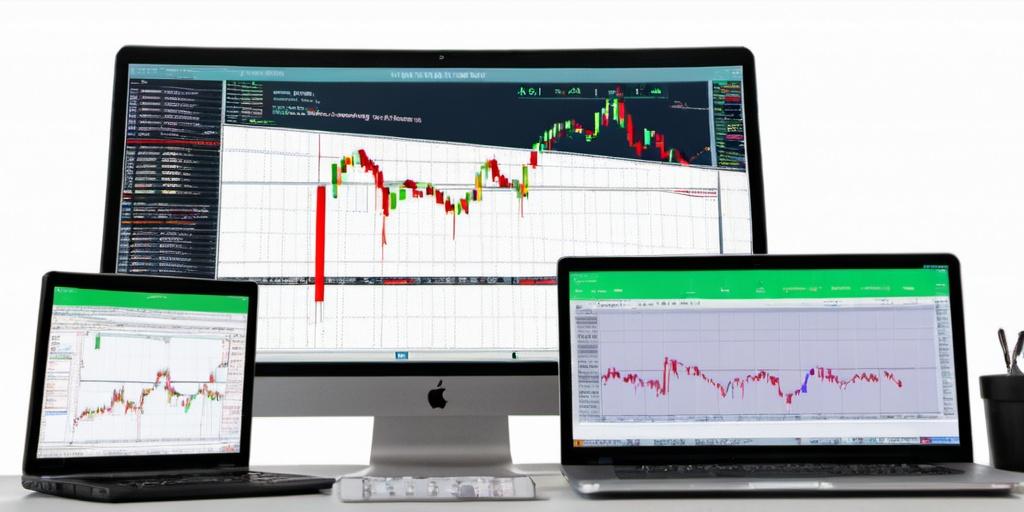Sierra Chart
YukonSoft >> Sierra ChartLearn more about Sierra Chart

Historial Perspective and Evolution
Sierra Chart has been around for quite a while, serving the trading community with a solid reputation. Originally designed in the early 2000s, it’s grown from a basic charting software to a full-fledged trading platform. Its evolution is a testament to its adaptability, constantly tweaking and enhancing its features to meet trader needs. Think of it as your old, reliable friend who’s seen it all and can probably tell you a thing or two about market trends.
Core Features and Offerings
Sierra Chart might look unassuming at first glance, but dig a little deeper, and you’ll discover its wealth of tools. The platform stands out for its real-time and historical charting capabilities. You can plot just about any indicator you dream up—or maybe read about in a finance magazine.
It supports various chart types: from the standard bars and candlesticks to Renko and Point & Figure charts, allowing traders to view data through their preferred lens. Its flexibility extends to timeframe customization, giving users the ability to tailor their charts to the minute—or even seconds, for those who thrive on the adrenaline rush of short-term trades.
The platform also supports automatic trading systems, offering a wide range of integrated tools like the ACSIL (Advanced Custom Study Interface and Language) for those who fancy themselves coding wizards. This lets traders create their own trading systems and indicators, letting you play the mad scientist and conjure up your perfect strategy.
Data and Connectivity
Quality data is the bread and butter of any trading platform, and Sierra Chart doesn’t skimp here. It supports multiple data feeds, including some of the heavy hitters like CQG, Rithmic, and Interactive Brokers. This flexibility ensures that traders have access to reliable and accurate data, no matter which feed they opt for.
Additionally, Sierra Chart’s DTC protocol support means it’s compatible with various brokers, creating a seamless trading experience. There’s nothing more frustrating than a delay between you and your next big trade, and the platform works hard to minimize such hiccups.
User Experience and Interface
At first, Sierra Chart’s interface might appear a bit stark. It lacks the glitz of some modern platforms, perhaps a consequence of its old-school roots. However, this minimalism may actually be a boon, reducing distractions and allowing traders to focus on what truly matters—the data.
Traders who love customization will be right at home. The platform allows adjustments and fine-tuning to suit individual preferences, be it altering color schemes, font sizes, or chart layouts. It’s like customizing a classic car where every detail is in your hands—to make it uniquely yours.
Pricing and Licensing
Sierra Chart operates on a subscription model, much like your favorite streaming service but potentially more profitable. There are several pricing tiers, starting from basic packages to more feature-rich ones. The platform opts for a straightforward pricing model without hidden fees, ensuring traders know exactly what they’re signing up for. Though it might not be the flashiest or the cheapest option out there, its value often outweighs the cost, especially for those serious about their trades.
Use Cases and Community
Sierra Chart offers a plethora of possibilities for different types of traders. Whether you are retail traders or professionals, there’s something here for everyone. Day traders will appreciate the real-time data and the ability to place swift orders, while swing traders might lean more into historical data analysis and chart customization features. In short, it’s a versatile tool adaptable to varying trading styles.
The Sierra Chart community is like a collective of lifelong learners. Forums and discussion boards are abuzz with tips, strategies, and custom indicators shared by traders across the globe. It’s here that the spirit of collaboration comes alive, with users constantly pushing the boundaries of what the platform can do.
Personal Experience and Anecdotes
Many traders, upon their first foray into Sierra Chart, often narrate tales of bewilderment and later, triumph. One such trader recalls the initial struggle to navigate its rather utilitarian interface, only to discover the incredible depth of customization possible. Like learning to ride a bike, once that initial learning curve is conquered, the potential is limitless.
Final Thoughts
Sierra Chart might not be the flashiest platform in the trading game, but its enduring reliability and adaptability win it loyal followers. It’s a platform that rewards patience, experimentation, and a bit of elbow grease. For traders willing to invest the time to master its features, Sierra Chart can be an invaluable ally in the pursuit of trading success.
In the end, it’s like a good cup of coffee—strong, reliable, and always there to kickstart your trading day.